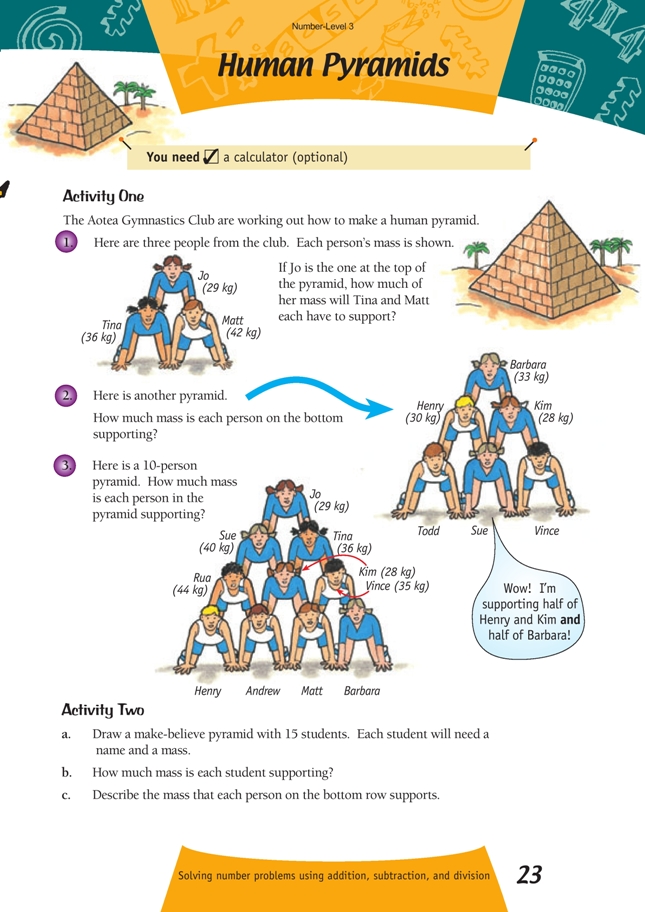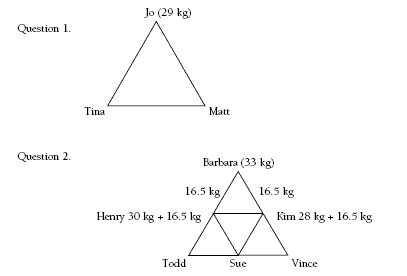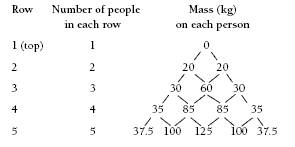This is a level 3 number activity from the Figure It Out series. It relates to Stage 6 of the Number Framework.
A PDF of the student activity is included.
Click on the image to enlarge it. Click again to close. Download PDF (218 KB)
use mental strategies to solve problems involing addition, subtraction, multiplication, and division
A calculator
Activity One
As with those for page 11, this activity provides opportunities for the mathematical processes achievement objectives listed above. You may decide to select one or two of them for particular attention.
These activities use an unusual context to encourage problem solving that involves the four operations. Warn students not to attempt to build a pyramid with their classmates because of the dangers involved.
The pyramid structure implies that the mass of each person is distributed equally onto the two people below. As some people have two people above them, they have half of each of those people’s mass as well a share of any mass that has been placed on those above them.
Todd gets half of 46.5 kilograms. Vince gets half of 44.5 kilograms. Sue gets the same as Todd and Vince combined.
Activity Two
Suggest to students that they use the same mass for each person in their pyramid model and they keep it a simple number. This way, they have a better chance of seeing how much the halving effect reduces the mass that each person on the bottom row has to support. They can also see that the end people have less mass to support than the middle people.
For example, what would happen if every person weighed 40 kilograms and you used 15 people?
Look at the bottom row. The end people each still have less than one person’s mass to support. The second person in has 2.5 times the mass of one person. The middle person has the most to support, and it is just over the mass of three people, even though there are 10 people above that person.
Answers to Activities
Activity One
1. 14.5 kg
2. Todd 23.25 kg, Sue 45.5 kg, Vince 22.25 kg
3. Jo none, Sue and Tina 14.5 kg, Rua 27.25 kg, Kim 52.5 kg, Vince 25.25 kg, Henry 35.625 kg, Andrew 75.875 kg, Matt 70.375 kg, Barbara 30.125 kg
Activity Two
a. Answers will vary.
b. Answers will vary.
c. The middle person supports the most mass (just over the mass of 3 people), the next 2 support about 2.5 times the mass of 1 person, and the end people support less than the weight of 1 person.


